The world of film is on the cusp of a paradigm shift, with artificial intelligence at its core. From scriptwriting and storyboarding to editing and visual effects, AI tools are making it easier for filmmakers to produce high-quality video content more quickly at a lower cost.
For independent creators, YouTubers and professional filmmakers alike, AI can optimize each step of the process and open up creative opportunities that once required a large budget.
By 2025, AI tools for filmmaking are more sophisticated so that they can create text to video, auto-editing, human sounding voiceovers, color grading, tracking and even creating shots.
This article looks at the top AI tools for filmmaking. If you’d like to make better movies with less work and more creativity, these are the tools that can take your projects to the next step.
To avoid AI detection, use Undetectable AI. It can do it in a single click.
Table of Contents
What are AI Filmmaking Tools?
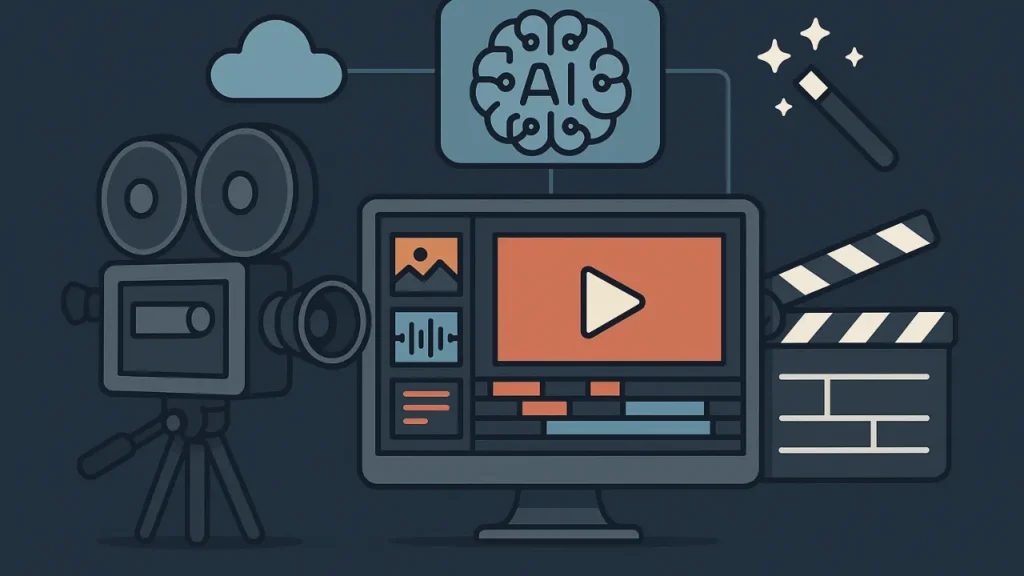
AI filmmaking tools incorporate AI for aid in various stages of film production. Such tools automate tasks, make processes faster and support creators in getting professional-level content without depending on large teams and hefty equipment. AI filmmaking tools are kind of like smart assistants for filmmakers.
They can write scripts, create storyboards, edit video automatically, enhance audio, generate realistic landscapes and models and even make videos from text descriptions. By learning patterns from data, A.I. can learn what filmmakers want and faithfully execute quickly and accurately.
These tools are now used in pre-production, production and post-production. AI tools for filmmaking streamline the whole process by saving time and reducing costs.
Top AI Tools for Filmmaking in 2025
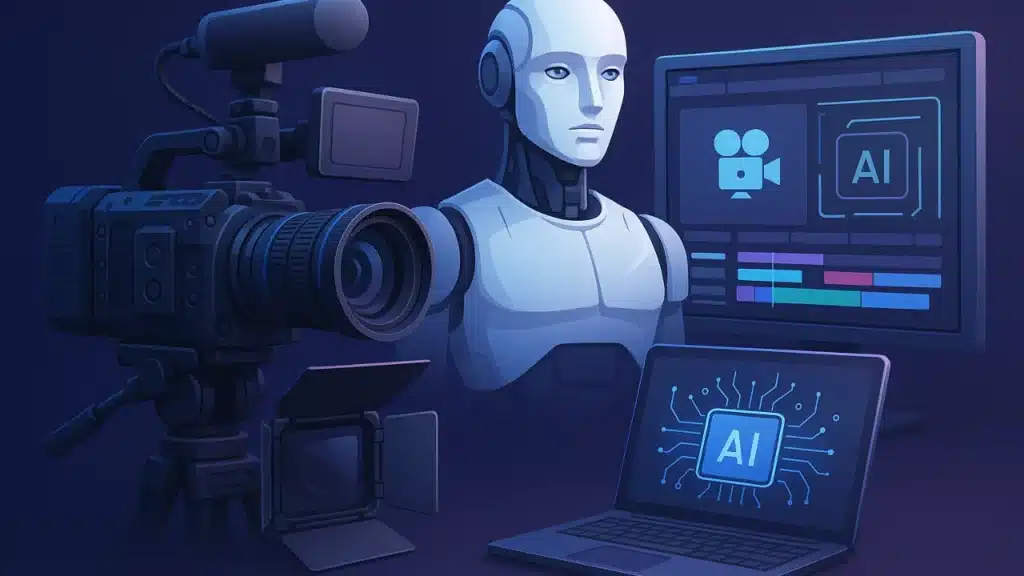
Below are some of the best AI tools for filmmaking in 2025.
Runway Gen-4/Runway ML
Runway’s Gen-4 is an advanced text-to-video AI model, which lets users generate short cinematic video clips based on prompts and reference images. It supports motion simulation, style transfer, and better scene consistency.
Runway ML itself (beyond Gen-4) has many AI video editing tools such as green screen removal, motion tracking, style effects and so forth.
OpenAI Sora (Sora 2)
LetsAI reports that Sora 2 is one of the most popular AI video tools in 2025. It is popular for creating natural style video and smooth motion and has cinematic lighting as well as real-time rendering.
Google Veo (Veo 3)
Veo is the text-to-video model from Google DeepMind. The newest update, Veo 3.1, introduces support for audio generation so that videos can include sounds made by AI. Recently, Google released tool called Flow (at Google I/O 2025) to connect Veo, Imagen & Gemini models targeted cinematic clip synthesis.
SHAI Creative
SHAI Creative is a filmmakers’ pre-production tool. You can go from your script to a storyboard and even generate shot lists and visualize scenes in no time.
Pictory AI
Pictory AI can also transform scripts or blog posts into video content with automatic voiceovers, according to GarageProductions. Great for content creators, instructional videos or for simple narrative films.
Synthesia Studio
Also mentioned by GarageProductions. Synthesia features 120+ AI avatars, realistic lip-sync and multi-lingual voice generation. Perfect for explainer videos, corporate content and training videos.
LTX Studio by Lightricks
Lightricks’ LTX Studio, an AI video creation platform, can transform the wisps of text prompts into fully-fleshed scenes, characters and storyboards. It puts framing and camera direction in the hands of creators, which works well for more director-driven workflows.
Boords
Boords (for pre-production and storyboarding) help automate the process by intelligently transforming scripts into detailed visual boards. It has real-time collaboration features, meaning teams can collaborate on storyboards and shot planning.
UniVA
UniVA is a new open-source multi-agent framework platform that enables video understanding, editing, segmentation, and generation. Helpful for more complex workflows that require intelligent automation as well as creative control.
Best Use Cases of AI Tools for Filmmaking
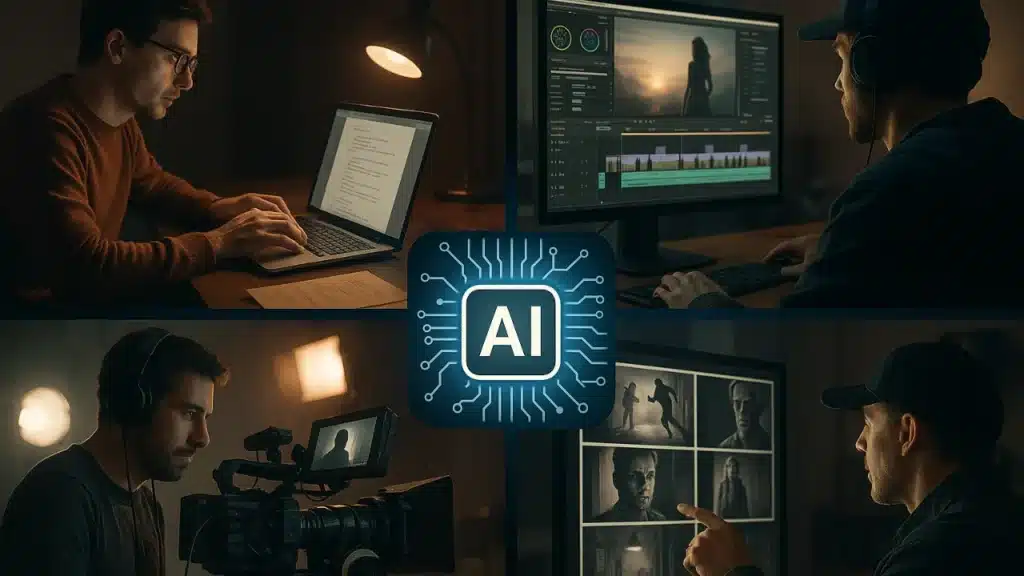
Artificial intelligence is revolutionizing every stage of film and video production, allowing creators to work faster, smarter and more adventurously.
Here are the greatest, most applicable applications of AI in film production:
Scriptwriting and idea generation: AI tools could assist in creating ideas and developing story concepts, or even writing full scripts. They help you with fine tuning of dialogue, expanding scenes and formatting a script much more quickly in pre-production.
story boarding and pre-visualization: When using AI to create images or videos, writers and directors might soon be able to turn a script into storyboard or animatic in real-time. It allows directors to see scenes, angles, props and environments before shooting starts.
Casting and character creation: Artificial intelligence casting tools break down roles and recommend actors for them. For animated films, AI can be leveraged to create the character and voice, as well as movement without cut and frame processes.
Location scouting and set planning: AI can create virtual sets. It can aid in predicting which lighting, camera angles or shot compositions will be best for a scene.
Automated video editing: AI editing tools can cut clips, erase silence, strip out background noise and sync sound automatically. It enables editors to cut hours of manual tasks and concentrate on creative decision-making.
Color grading and visual enhancements: Color grades can be matched, scenes enhanced and footage stabilized using AI tools, and services that can recreate cinematic looks. It means a lot of time can be saved in post-production.
Visual effects (VFX) and CGI: AI can create explosions, weather effects or even entire environments. It accelerates VFX pipelines by aiding artists in removing objects, adding depth maps or realistic lighting and even shadows.
AI voiceovers and dialogue replacement: Producers now have the ability to immediately generate human sounding voice-overs in dozens of languages and accents. It can also swap out tinny conversation for clear, studio-quality audio with voice cloning.
Text-to-Video generation: AI can generate photorealistic scenes just from text prompts. This is great for concept art, previs, and short films or content that just doesn’t need to be traditionally filmed.
Marketing and trailer creation: AI can comb through entire films and create trailers, teasers, posters and social media content for them with no human input needed.
Benefits of Using AI Tools for Filmmaking
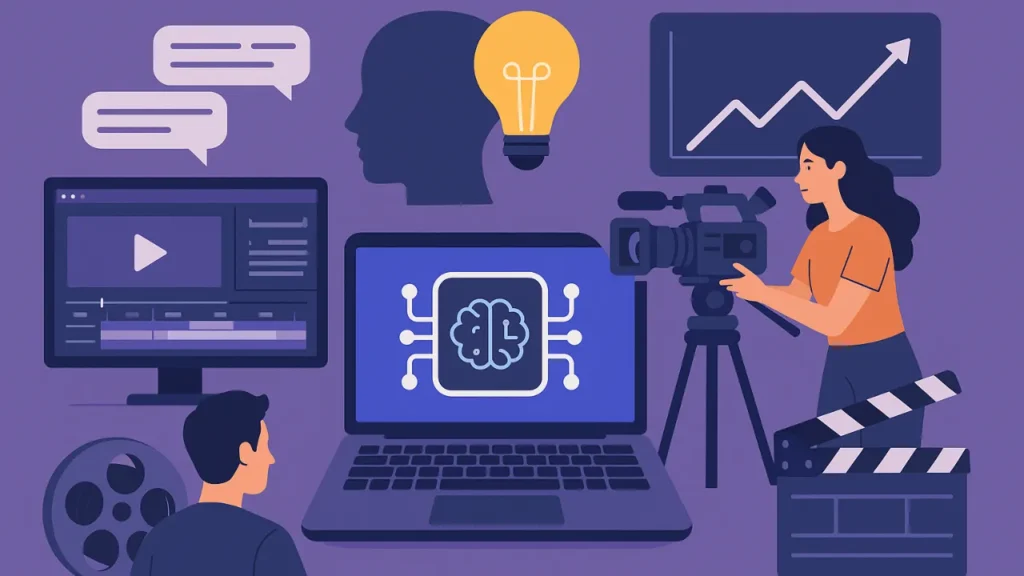
AI is proving to be some of the most useful and valuable assets in the modern filmmakers’ arsenal.
- AI automates laborious tasks like editing, color grading, noise reduction, script formatting and scene blocking. This lets filmmakers create projects very quickly, which is especially useful when working with multiple deadlines.
- Conventional film making is typically dependent on costly equipment and large crews. AI makes it more cost effective to do things like voiceover, visual effects, motion graphics and scene-rendering.
- AI enables filmmakers to visualize concepts in new ways. Concept art, storyboard and text-to-video tools enable creators to try out styles scenes and camera angles with no physical setup needed.
- AI-powered software can upscale resolution, stabilize shaky footage, amp up colors, scrub out background noise and scrub clean visuals. This provides a higher end production look.
- AI can also be used to churn out scripts, shot lists, character designs and set ideas in minutes. It helps directors and writers by reviewing structure of a story, offering improvement advice and presenting visual previews.
- AI puts high-end filmmaking tools at the fingertips of everyone. You don’t need the technical expertise or massive budgets anymore to achieve those studio results.
- AI voice tools can generate natural-sounding voiceovers in multiple languages in seconds.
- Some A.I. platforms analyze viewer behavior, engagement and trends. This empowers the filmmaker to make content that the audience actually wants and increases their success on platforms such as YouTube or TikTok, and also OTT channels.
- Post-production gets more efficient with automatic scene cuts, AI help with VFX and more.
- Anyone with a smartphone can now add cinematic videos, moving scenes and professional edits with AI-driven tools.
Tips for Choosing the Right AI Tools for Filmmaking
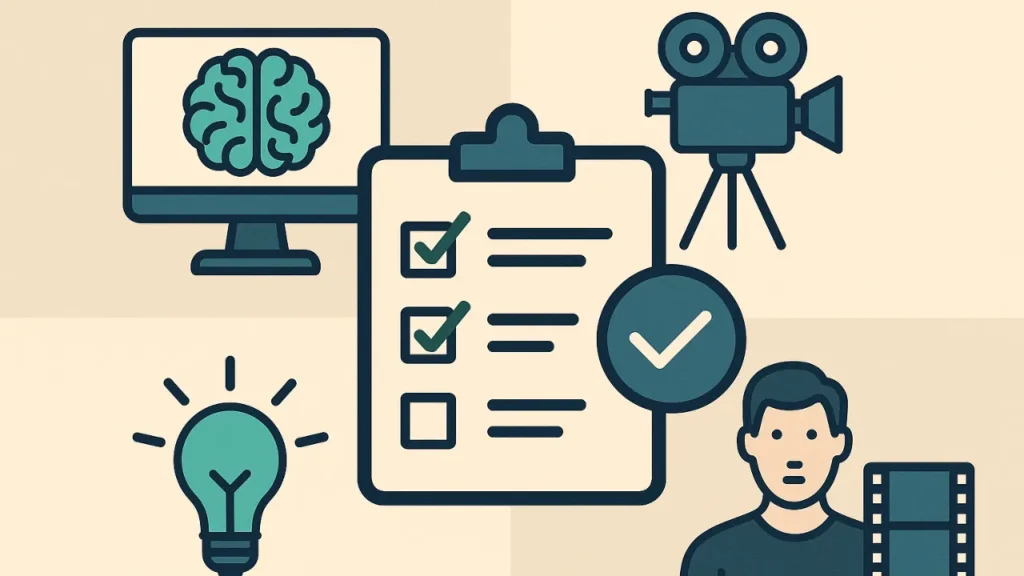
Choosing the right AI tools for filmmaking will really help speed up your workflow. However, with hundreds of AI tools available today, it can be challenging to identify the right tools for your specific project.
Here are some key tips to help you decide:
- Identify your filmmaking goals
- Consider your skill level
- Check compatibility with your editing software
- Look at the output quality
- Evaluate pricing and subscription plans
- Look for tools that offer customization
- Prioritize tools with good support and tutorials
- Check speed and performance
- Think about long-term use
- Start small and expand as needed
FAQs: AI Tools for Filmmaking
Which AI based tool should I use as a beginner filmmaker?
Runway ML, Pictory AI and Synthesia Studio are great tools for beginners. They are easy to use even with no advanced skills and assist in editing, adding voiceovers, and video generation.
Can AI replace human editors and filmmakers?
AI can automate the mundane and speed up production, but it cannot replace human creativity, storytelling or directorial vision. The key creative decisions remain in the hands of filmmakers.
Are AI filmmaking tools expensive?
AI tools vary in price. Some are free and include minimal features. Others might be professional level or subscription-based giving them a monthly cost of $20-$100+. Free trials allow many creators to experiment with the tool before they have to commit to paid plans.
Conclusion: AI Tools for Filmmaking
AI is transforming the filmmaking industry. AI tools for filmmaking, from preproduction and storyboarding to editing, VFX and voiceovers are helping filmmakers cut time, costs and open up creative opportunities. But AI can’t quite replace human creativity and storytelling.
For independent creators, YouTubers and aspiring professional filmmakers alike, using the right AI tools for filmmaking help you achieve high quality film results with less effort. The possibilities for filmmaking are endless as AI continues to develop.
Adopting these tools now can put you way ahead of the curve when it comes to creating professional-level films.
Read Also:
How to Become an AI Prompt Engineer?
